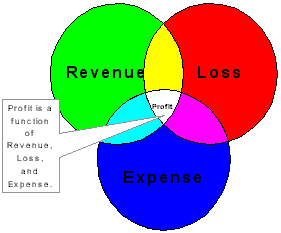
Business Solutions for Your Profitable Future
Loss
cost reduction model - profit equation
Loss represents the wastage of resources. The loss component of business is usually overlooked unless a Total Quality Management system is in place to raise awareness. Following is a list of resources, the ways that they can be wasted, and a summary of how a Profit Improvement Process (PIP) can impact losses.
Resources that can be conserved to save money and improve revenues include:
- Time
- Money
- People
- Good will
- Knowledge
- Culture
- Work environment
- Materials & supplies
- Work in process
- Finished goods
- Avenues of loss include:
- Quality rejects
- Insurance losses
- Theft
- Inefficiency
- Time delays in product development
- Lost or unrealized productivity
- Employee turn-over
- Strikes and slowdowns
- Wastage
- Spillage
- Returns
- Warrantee costs
- Unretained (lost) customers
What PIP Does to Losses:
The Profit Improvement Process (PIP) identifies, quantifies, and prioritizes the areas of loss that your business is experiencing. Priorities are addressed to increase profits. Key points about loss management include:
- Every dollar of loss that is removed reports directly to the bottom line.
- The elimination or reduction of losses give an immediate and favorable impact to bottom line profitability
- Reducing losses can increase sales - improved quality and/or productivity
- Reducing losses often increases profits without any negative impact. Most often the impact is favorable as quality improves
Achieving World-Class Profit Improvement: See the world-class profit improvement processes. A must-have resource for any cost reduction practitioners.
